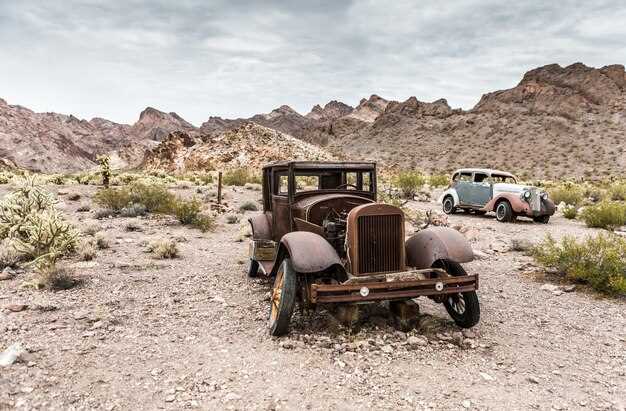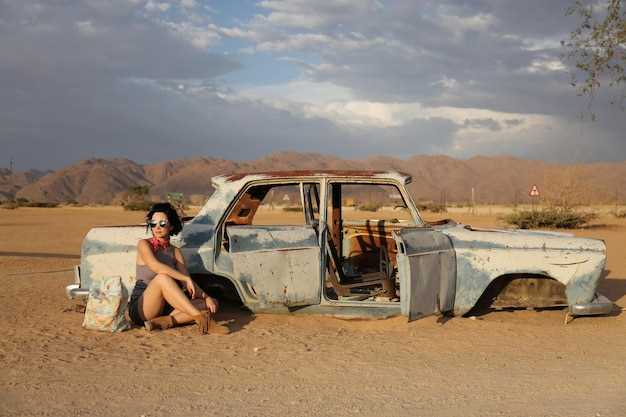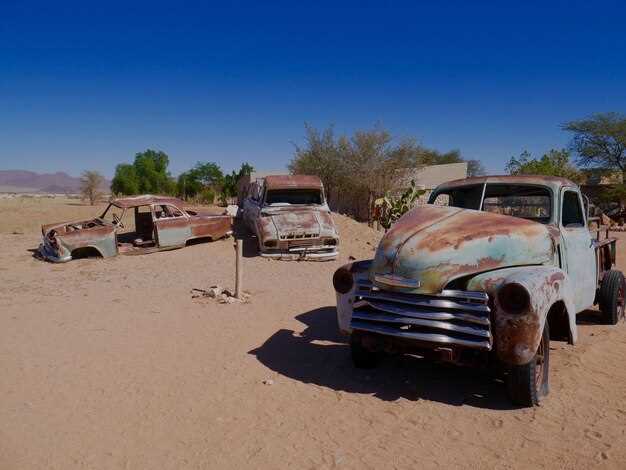
The resurgence of vintage SUVs is transforming the automotive landscape, captivating a new generation of car enthusiasts. These classic vehicles, once primarily seen as functional means of transportation, are now celebrated for their unique blend of utility and nostalgia. As modern vehicles increasingly emphasize efficiency and technology, collectors seek the charm and character that vintage SUVs offer.
Vintage SUVs embody a sense of adventure, sporting robust designs and rugged capabilities that modern cars often lack. Each model has its own story, steeped in the rich history of the automotive industry. Enthusiasts appreciate the craftsmanship and distinct features that defined an era when utility was paramount and style was distinctly personal.
Moreover, investing in classic SUVs has become not just a passion but a lucrative opportunity for collectors. As demand rises, so do the values of these iconic models, making them appealing assets. The combination of practicality and the thrill of ownership continues to drive the trend, making vintage SUVs a sought-after choice among car lovers everywhere.
Top Classic SUVs Gaining Popularity in Today’s Market
The resurgence of interest in classic SUVs is primarily driven by their unique blend of utility and nostalgia. Among these, a few standout models have captured the attention of car enthusiasts and collectors alike.
One notable model is the Jeep Wagoneer, which embodies ruggedness and versatility. With its spacious interior and iconic wood-paneling, the Wagoneer appeals to those seeking a blend of style and functionality. Its robust four-wheel-drive system ensures it performs well off-road while offering comfort on paved roads.
The Ford Bronco, especially the first generation produced from 1966 to 1977, has also seen a remarkable revival in popularity. Known for its compact size and exceptional off-road capabilities, this classic SUV has become a symbol of adventure. Its classic design, along with modernized upgrades, makes it attractive to today’s market.
Another classic gaining traction is the Toyota Land Cruiser. Its reputation for reliability and longevity has made it a beloved choice for outdoor enthusiasts. The older models, especially those from the 80s and 90s, are prized for their durable construction and formidable off-road prowess.
Lastly, the Chevrolet K5 Blazer stands out with its removable top and bold styling. This classic SUV offers an engaging driving experience, appealing to those who appreciate both form and function. Its ability to traverse urban environments and rugged terrains alike makes it a versatile choice for modern drivers.
As the market trends towards sustainability and individuality, these classic SUVs are not just relics of the past but are becoming symbols of a lifestyle that values functionality and style. Their enduring appeal ensures they will continue to capture the hearts of car enthusiasts for years to come.
How Vintage SUVs Combine Style and Utility for Modern Drivers

Vintage SUVs possess a unique charm that blends classic aesthetics with everyday practicality, making them increasingly popular among modern drivers. Unlike contemporary models, which often prioritize efficiency and technology, vintage SUVs offer a distinctive design that evokes nostalgia while still delivering functionality.
One of the key attractions of vintage SUVs is their rugged appearance, characterized by bold lines, prominent grilles, and an overall robust stance. These vehicles stand out on the road, appealing to those who appreciate timeless design. The classic styling not only resonates with car enthusiasts but also creates a sense of individuality that contemporary cars often lack.
In addition to their attractive looks, vintage SUVs excel in utility. Many models feature spacious interiors, allowing for comfortable rides and ample cargo space. This practicality caters to diverse needs, whether for families, outdoor enthusiasts, or urban dwellers looking for versatility in their vehicle. The ability to transport gear for adventures or accommodate large groups makes these classic SUVs highly functional.
Moreover, the mechanics of vintage SUVs can often be simpler than their modern counterparts, making them easier to repair and customize. Enthusiasts appreciate the hands-on experience of maintaining and restoring these vehicles, further enhancing their connection to the car. This aspect fosters a passionate community surrounding vintage models, where owners share tips and tricks to keep these classics on the road.
As a result, vintage SUVs seamlessly combine style and utility, appealing to both aesthetics and practicality for modern drivers. Whether navigating city streets or venturing off the beaten path, these classic vehicles offer a sense of adventure that resonates in today’s automotive landscape.
Maintaining and Restoring Vintage SUVs: Tips for Enthusiasts

Maintaining and restoring vintage SUVs requires a keen understanding of both the classic design and the utility these vehicles offer. Here are several essential tips to ensure that your vintage SUV remains in excellent condition.
First and foremost, regular maintenance is critical. This includes checking and changing fluids, such as engine oil, transmission fluid, and coolant. Vintage SUVs often utilize older mechanical systems that may be prone to wear, so a consistent maintenance schedule will help prevent more extensive repairs in the future.
When it comes to restoring, focus on sourcing original parts whenever possible. Authentic components not only preserve the classic appearance but also maintain the functionality specific to the model. Research reputable suppliers who specialize in vintage automotive parts to find what you need.
Bodywork is another crucial aspect of restoration. Rust can be a significant issue in older SUVs, particularly those that were not adequately protected from the elements. Carefully inspect the chassis and body panels, and address any signs of rust promptly. Using proper sealing techniques and paint can also enhance longevity.
Start with a thorough inspection of the vehicle before beginning restoration. Compile a list of necessary repairs and upgrades. Prioritize critical systems such as brakes, steering, and suspension. These components are vital for safety and should be in optimal condition for utility.
Preserving the interior can elevate the overall value and appeal of a vintage SUV. Depending on its condition, consider reupholstering seats, replacing worn carpets, or restoring dashboard features. Maintaining originality is important, so choose materials and colors that are consistent with the era of the vehicle.
Lastly, consider joining local or online communities of vintage SUV enthusiasts. These groups often provide invaluable resources, advice, and support. Sharing experiences can help you tackle challenges and celebrate successes related to maintenance and restoration.
